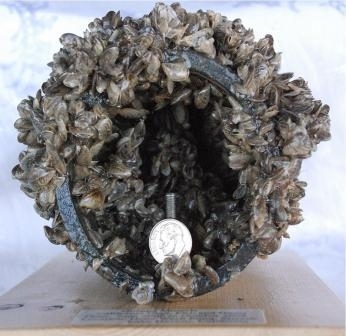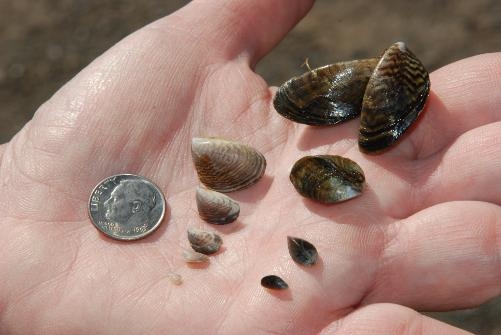Carolynn Culver, a research scientist at UC Santa Barbara and an California Sea Grant extension specialist, is researching whether native sunfish can be used in place of toxic chemicals to reduce invasive mussel larvae and other pests in Southern California lakes and reservoirs, reported Sonia Fernandez in the USCB online magazine Futurity.
Quagga and zebra mussels are two of the most devastating aquatic pests in the United States. The small freshwater mussels grow on hard surfaces such as water pipes, and can cause major problems for water infrastructure. First appearing in North America in the 1980s, and in California in 2007, mussel management with chemicals has been shown to impact water quality.
“Commonly used mussel control methods are problematic for San Diego reservoirs since they are primary water supply reservoirs,” said study coauthor Dan Daft, a City of San Diego water production superintendent and biologist.

In another study aimed at protecting water from toxic chemicals, Culver worked with UC Cooperative Extension advisor emeritus Leigh Johnson to study hull cleaning practices that can be alternatives for using copper-based paints, which leach copper into water.
The team showed that frequent, minimally abrasive, in-water hull cleaning was effective and did not cause an increase in fouling as reported for other hull cleaning practices. Results from the study, along with other research findings, informed the development of an integrated pest management framework that boaters can adapt to different regions and specific needs.
“It's not a one-size-fits-all approach — it's adaptive,” Culver said. “Boaters can tailor it to local environments, regulations and boating patterns, and it can be applied in areas where toxic paints have been restricted, as well as where they continue to be used. It can help to keep boat hulls clean, while reducing impacts on water quality and transport of invasive species — three issues that often are not considered together.”
Read more about UCCE quagga and zebra mussel research and extension.
